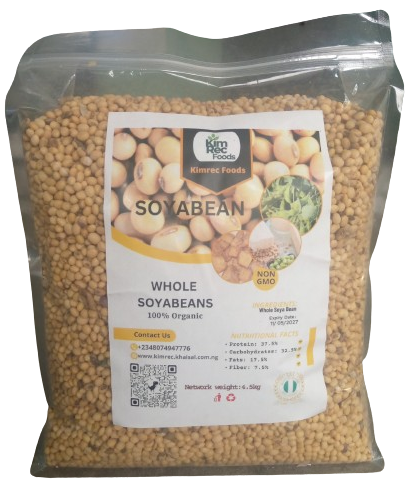Yam Flour (WHITE) undiluted 4.5kg
₦19,500.00
Yam flour is produced by drying and milling yams (genus Dioscorea), which are staple tuber crops in many parts of the world.
Description
Nutritional Value of Yam Flours
Yam flour is produced by drying and milling yams (genus Dioscorea), which are staple tuber crops in many parts of the world. The nutritional value of yam flour varies based on the yam species, processing methods, and flour type. Here is a comprehensive breakdown of its typical nutritional composition:
Macronutrients (per 100 grams)
- Calories: 345 – 370 kcal
- Carbohydrates: 80 – 85 g
- Dietary Fiber: 2.0 – 4.0 g
- Sugars: 0.5 – 1.5 g
- Protein: 4.0 – 7.0 g
- Fat: 0.2 – 1.5 g
- Saturated Fat: 0.1 – 0.2 g
Vitamins and Minerals
- Vitamin C (Ascorbic Acid): 5 – 10 mg
- Vitamin B6: 0.2 – 0.4 mg
- Vitamin B1 (Thiamine): 0.05 – 0.1 mg
- Vitamin B2 (Riboflavin): 0.03 – 0.05 mg
- Vitamin B3 (Niacin): 0.5 – 1.2 mg
- Folate: 10 – 20 µg
- Calcium: 10 – 40 mg
- Magnesium: 15 – 40 mg
- Phosphorus: 30 – 60 mg
- Potassium: 300 – 500 mg
- Iron: 0.5 – 1.2 mg
- Zinc: 0.3 – 0.8 mg
- Sodium: 10 – 50 mg
Amino Acid Profile
Yam flours contain a range of essential amino acids, though the exact profile varies. Here’s a general representation:
- Lysine: 0.1 – 0.2 g
- Methionine: 0.05 – 0.1 g
- Phenylalanine: 0.1 – 0.2 g
- Threonine: 0.1 – 0.2 g
- Tryptophan: 0.02 – 0.05 g
- Valine: 0.2 – 0.4 g
Health Benefits and Applications
- Energy Source: Rich in carbohydrates, making it a good source of energy.
- Fiber Content: Aids in digestion and may help in regulating blood sugar levels.
- Mineral Rich: Particularly high in potassium, beneficial for heart health and muscle function.
- Gluten-Free: Suitable for gluten-free diets, making it a good alternative for people with celiac disease or gluten intolerance.
- Vitamins: Provides essential B vitamins and Vitamin C, supporting metabolic processes and immune function.
Usage and Preparation
Yam flour can be used in a variety of culinary applications including:
- Fufu: A dough-like food commonly eaten in Africa.
- Baking: As a gluten-free flour alternative in bread, cakes, and pastries.
- Thickening Agent: In soups and sauces.
- Porridge: As a base for breakfast porridge.
Storage and Handling
- Storage: Keep in a cool, dry place in an airtight container to avoid moisture absorption and spoilage.
- Shelf Life: Typically lasts several months to a year if stored properly.
Nutritional Comparison with Fresh Yams
Fresh Yams (per 100 grams) typically contain:
- Calories: 115 – 120 kcal
- Carbohydrates: 27 – 30 g
- Protein: 1.5 – 2.0 g
- Fat: 0.1 – 0.3 g
- Fiber: 3 – 4 g
Drying and processing into flour concentrates the nutrients, particularly carbohydrates and protein, while reducing the water content.
Conclusion
Yam flour is a nutritious and versatile ingredient, valued for its high carbohydrate content and significant mineral and vitamin contributions. It serves as an excellent alternative for gluten-free diets and can be utilized in a wide array of culinary applications.












Reviews
There are no reviews yet.